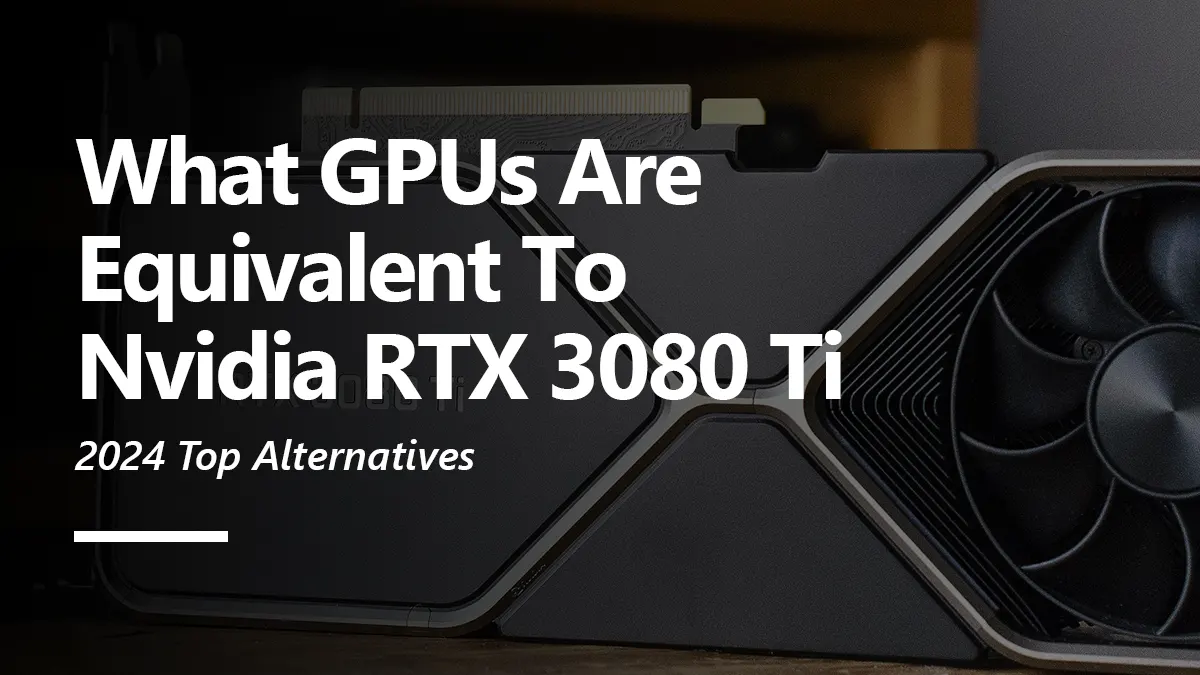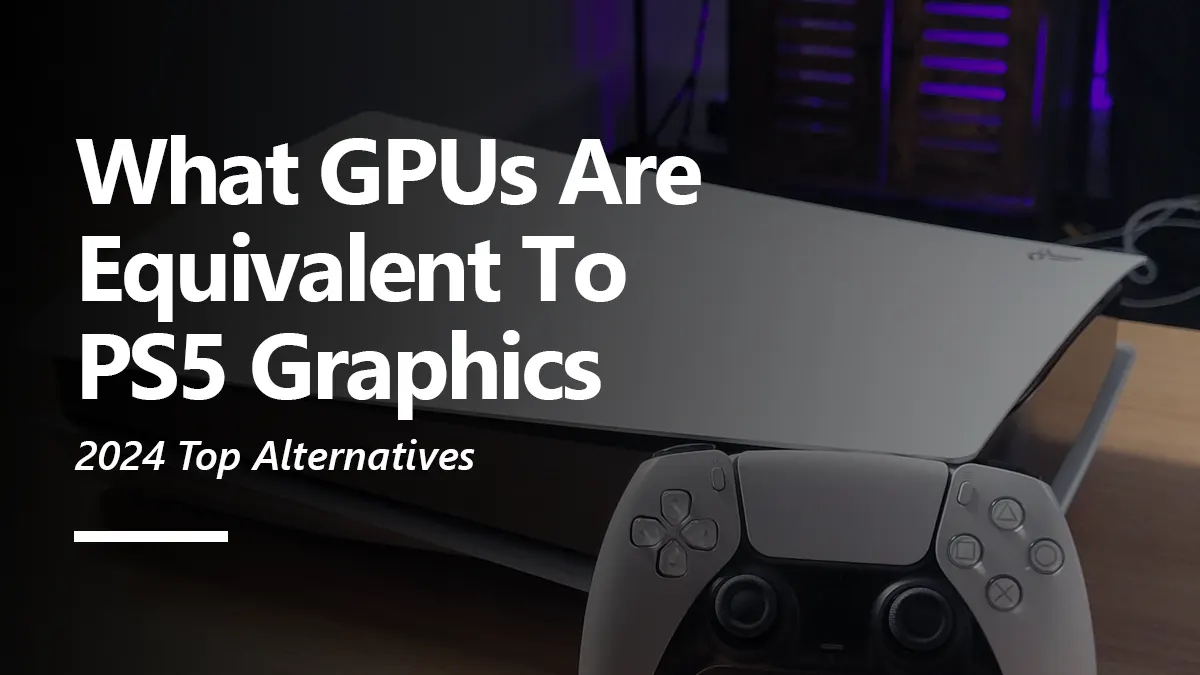The RTX 4080 is an exceptionally formidable graphics card with lots of power for high-end graphics gaming and content creation suitability. Released in 2022, along with other RTX 40 series graphics cards, it marked its dominance by outshining most of the RTX 30 series cards, even the high-end ones like 3080ti and 3090, all while being offered at a price tag of less than 1000 bucks.
It entails GDDR6X 16GB video memory with other features, such as 2200 – 2500 MHz clock speeds and a massive 718 GB/s bandwidth transfer speed with a 256-bit bus interface, all while being fully compatible with the contemporary PCIe Gen 4 x16 connectivity lane. Utilizing approximately 10K CUDA cores, more than 300 4th-gen tensors, and 76 3rd-gen raytracing cores working with the Ada Lovelace 5nm architecture guarantees outstanding performances in gaming, creative, and AI workloads.
Aside from Team Green, today, we have two AMD GPUs that promise the same productiveness within the exact price or lower and cater to consumers who want something else but still compare to the 4080 on every step.
GPU equivalent to the RTX 4080
The RX 7900 XT and 7900 XTX are the most kindred to the RTX 4080, corresponding to their performance, efficiency, cores, architecture, and same 5nm process size by TSMC. The 5nm fabrication of the RTX 4080’s chip has become a standard for almost every newly manufactured GPU. Let us check how these two hold against the RTX 4080.
Sapphire Nitro+ RX 7900 XT Vapor-X
Complying with the modern Graphics demands, AMD delivered the RX 7900 XT with an introduction to their latest RDNA 3 architecture and 5nm chip. The RX 7900 XT facilitates faster-than-before clock speeds, roughly 50% efficient architecture, and abundant specialized cores.
The 20 gigs of video memory and 1500 – 2560 MHz clock speed range work wonders for gaming at the highest graphics and resolution. The memory is a partially slower GDDR6 but reaches higher bandwidths of 800 GB/s, indicating a better architectural and interface performance.
Moreover, the 7900 XT includes up to 5300 stream units with 84 raytracing units that are good but don’t cut it compared to RTX 4080’s raytracing. However, with some improvements over the subsequent months, AMD has proven that its FSR upscaling can go head-on with Nvidia’s DLSS.
| Feature | Sapphire Nitro+ RX 7900XT Vapor-X | Ge force RTX 4090 |
|---|---|---|
| Architecture | RDNA 3.0 | Ada lovelace |
| Core Clock (MHz) | 1500 MHz | 2205 MHz |
| Boost Clock (MHz) | 2560 MHz (+7%) | 2505 MHz |
| CUDA Cores | 5376 | 9728 |
| Memory Type | GDDR6 | GDDR6X |
| Memory Size (GB) | 20 GB | 16 GB |
| Memory Bus Width (bits) | 320 bit | 356 bit |
| Memory Speed (Gbps) | 2500 MHz 20 Gbps effective | 1400 MHz 22.4 Gbps effective |
| TDP (Watts) | 368 W | 320 W |
| DirectX Version | 12 Ultimate (12_2) | 12 Ultimate (12_2) |
| OpenGL Version | 4.6 | 4.6 |
| VR Ready | - | - |
| Ray Tracing Cores | 96 | 76 |
| Ports | 2x HDMI 2.1a 2x DisplayPort 2.1 | 1x HDMI 2.1 3x DisplayPort 1.4a |
| Price | $909.99 - $1,069.99 | $1,199 |
PowerColor Red Devil RX 7900 XTX
The RX 7900 XTX is an augmented model of the 7900 XT with everything in more quantities. It is based on the same architecture but features generously more cores, transistors, and VRAM with a higher data transfer rate.
The 7900 XTX has a 24-gigabyte memory of the same GDDR6 type and has a higher base frequency of 1800 MHz. It consists of 6144 stream processors and 96 raytracing engines that substantially improved raytracing optimization.
Raytracing isn’t something that AMD has been able to deliver meaningfully. But other than that, the RX 7900 XTX has extreme performance and effectiveness, quickly displaying a performance delivery for up to 4K resolution gaming experience.
With some help from AMD’s Radeon application and FSR AI upscaling, consumers can flawlessly recreate the glory of the RTX 4080 without any apparent drawbacks.
| Feature | PowerColor Red Devil RX 7900XTX | Ge force RTX 4090 |
|---|---|---|
| Architecture | RDNA 3.0 | Ada lovelace |
| Core Clock (MHz) | 1855 MHz | 2205 MHz |
| Boost Clock (MHz) | 2563 MHz (+3%) | 2505 MHz |
| CUDA Cores | 6144 | 9728 |
| Memory Type | GDDR6 | GDDR6X |
| Memory Size (GB) | 24 GB | 16 GB |
| Memory Bus Width (bits) | 384 bit | 356 bit |
| Memory Speed (Gbps) | 2500 MHz 20 Gbps effective | 1400 MHz 22.4 Gbps effective |
| TDP (Watts) | 355W | 320 W |
| DirectX Version | 12 Ultimate (12_2) | 12 Ultimate (12_2) |
| OpenGL Version | 4.6 | 4.6 |
| VR Ready | - | - |
| Ray Tracing Cores | 96 | 76 |
| Ports | 1x HDMI 2.1a 3x DisplayPort 2.1 | 1x HDMI 2.1 3x DisplayPort 1.4a |
| Price | $1,95712 | $1,199 |
Conclusion
To summarize this whole discussion, the RTX 4080 is an inherently better graphics card, with few of AMD’s options only coming close to it in overall performance. However, if we don’t emphasize raytracing output, then AMD’s RX 7900 XT and 7900 XTX are indisputably better. They have a better price-to-performance value and excellent per-watt/per-$ efficiency.
The 7900 XT and XTX cost less than the 4080, and it becomes clear that Nvidia is charging extra money for its superior raytracing execution. However, The RTX 4080 is ample for those whose workloads and creative workloads are centered around raytracing, deep learning, and AI-related tasking.




